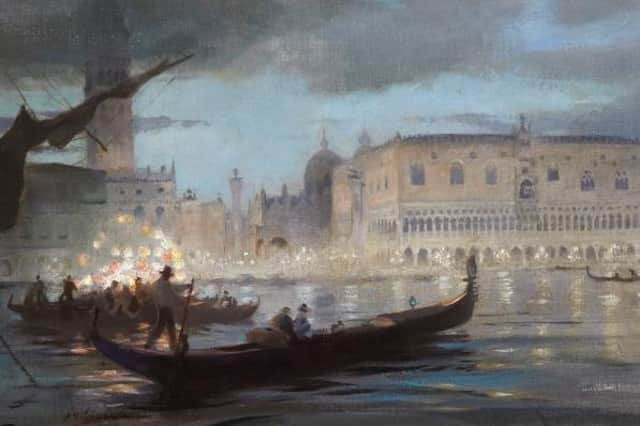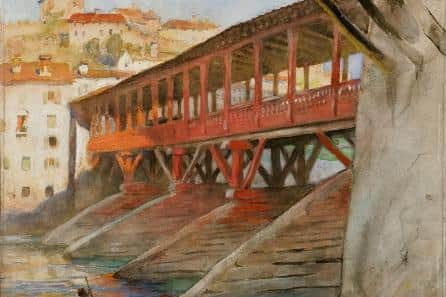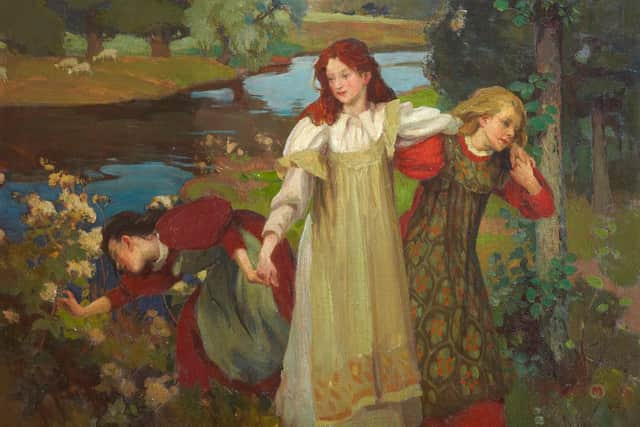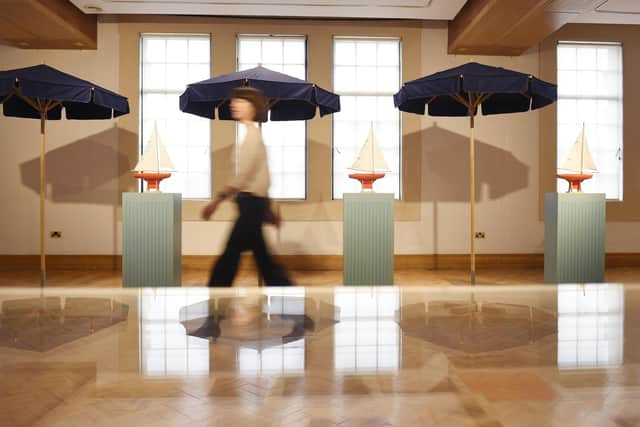Art reviews: Charles Mackie | Ian Hamilton Finlay | Willie Rodger


Charles Mackie: Colour and Light, City Art Centre, Edinburgh *****
Marine: Ian Hamilton Finlay, City Art Centre, Edinburgh, *****
Advertisement
Hide AdWillie Rodger: Across the Board, Royal Scottish Academy, Edinburgh ****


The last two decades of the 19th century were an exciting time for art in Scotland, but taking the Glasgow Boys at their own estimate of their originality has obscured how much they were part of a Scotland-wide surge in creativity. One way of dealing with this has been simply to co-opt artists like Arthur Melville into the Glasgow story, an abuse of history. Correspondingly, however, artists who haven’t been co-opted to this dominant story have languished in relative obscurity. Charles Mackie is a good example. Even though he was a close friend of EA Hornel and – joining his friend at his home in Kirkcudbright – he led the way in making the town a destination for painters, he has been left out of history. A welcome exhibition at Edinburgh’s City Art Centre now puts that right.
A painting of Kirkcudbright from about 1884 is one of the earliest works on show. Later, in Edinburgh, Mackie joined the stimulating international circle of Patrick Geddes. Travelling to France, he became friendly with Paul Serusier and others among the followers of Gauguin who called themselves the Nabis. Geddes, a passionate francophile, then employed Mackie to decorate his flat in Ramsay Garden with murals in a distinctly French Symbolist style. Large scale reproductions of two of the surviving murals give an idea of just how dramatic Mackie’s flat with its brightly coloured paintings must have looked. (The reproductions distort the colour – a glimpse of the murals in a short film gives a better idea of their quality.)
Mackie deployed a similarly original sense of design and colour in the easel painting, There were Three Maidens pu’d a Flower/ By the Bonnie Banks of Fordie. He had already used the composition for a woodcut illustration in The Evergreen, Geddes’s counterblast to the decadent Yellow Book. Though less dramatically, Mackie’s bold simplicity of design informs landscapes, as in a lovely winter view of the church at St Monans; a big bold painting of a laden hay cart; a beautiful silvery watercolour, Moonlight on the Bay; and a richly textured painting of autumn trees at Carlops.
Mackie enjoyed considerable success and counted Andrew Carnegie among his patrons. This allowed him to travel and Italy, but especially Venice, is the subject of some of his finest paintings. Inspired by Whistler, Twilight on the Dogana and The Palace Gardens, Venice, are two beautiful watercolour studies of moonlight. His masterpiece in this genre, however, is La Piazetta Venice, an evening scene with women sitting at cafe tables under the arches of the Biblioteca Marciana looking towards the Doge’s Palace and the lagoon beyond. With warm lantern light in the foreground and cool blue twilight beyond, it is masterly. With the exception of Perth Museum which has a rich collection, public collections tended to neglect Mackie. Consequently much of what is on view here is on loan from private collectors, but because he exhibited and sold regularly outside of Scotland much of his work is currently untraced. A richly coloured and vivid sketch for a larger painting of the Nomentano Bridge near Rome hints at what we are missing. Perhaps this show will bring more work out of hiding.


Mackie was also a pioneering master of the Japanese multi-block woodcut and some of his most remarkable work is in this medium. He was expert in the use of colour and this is strikingly apparent in these brilliant prints. In The Incoming Tide, for instance, he uses blue and white against grey to evoke the sea with beautiful effect. His finest print, though, is Bassano Bridge shown here with his original watercolour alongside. It is a big print, square in format and the covered bridge painted red marches diagonally across the composition. It really is a masterpiece.
Advertisement
Hide AdMarine, a selection of works by Ian Hamilton Finlay on his favourite subject, the sea and ships, is also showing at the City Art Centre. Finlay of course worked in collaboration with other artists. Mackie was a thinking artist and I think Finlay would have appreciated especially the beauty of his woodcuts. That reflection is prompted by the way that the exquisite care with which this show has been arranged demonstrates immediately and with utter conviction the sheer beauty of much of the work that Finlay achieved with his collaborations. To see Homage to Modern Art, for instance, or Evening Will Come / They will Sew the Blue Sail hanging alone, uncluttered on the wall, is to realise the full visual impact of his concrete poetry. The former print, produced with Jim Nicholson, is a wordless image of a brown-sailed Thames barge with a psychedelic art work on its sail. The latter, produced with Michael Harvey, is simply those words in white on a tall rectangle of blue: the blue sail of night is drawn across the sky. Finlay was exacting and his prescriptions to his collaborators were very precise. This visually beautiful display triumphantly refutes anyone tempted to see him as just a dry poet who relied too much on others.
The show explores the wide range of his images of the sea. He loved fishing boats with their poetic names and there are several examples here. Wings is simply an actual boat with its oars as wings. Ships’ Bells is a set of brass ships’ bells each with an inscription. Fisherman’s Cross plays in the words “seas” and “ease” arranged in a cross. Proem, a simple line drawing, white on black, of the prow of a fishing boat, puns on prow, but a proem, from Greek, is literally a preceding song: the prow sings through the water.
Advertisement
Hide AdBattleships, aircraft carriers and submarines also fascinated Finlay. A piece of dazzle camouflage above the words In The First World War Many Ships were Sunk by Submarines that Disliked Abstract Art puns on the camouflage, and the abstract art that inspired it. Battle of Midway I, made with Ron Costley, illustrates emblematically the sea battle that was the turning point of the War in the Pacific with bees and beehives for carriers and aircraft. There are also several cases of notes and ephemera all nicely chosen to illuminate the work on the walls. It is altogether a beautiful show. The city must take note of what a remarkable achievement it is for the staff of the City Art Centre, after all the difficulties of the pandemic (and Brexit added its own churlish obstructions, too, I was told) to reopen on the first possible day with two five star shows. Many far better resourced galleries would have been proud to have achieved the half of it.


And finally, not to forget the RSA. It has likewise defied current difficulties to keep presenting art for us to enjoy while others much better resourced have lain very low. Its new exhibition is a delightful show of the late academician and master print-maker, Willie Rodger. A modest man, his work was always a familiar presence in the big group shows, but here we see how impressive his range really was.
Charles Mackie until 10 October; Ian Hamilton Finlay until 3 October; Willie Rodger until 20 June
A message from the Editor:
Thank you for reading this article. We're more reliant on your support than ever as the shift in consumer habits brought about by coronavirus impacts our advertisers.
If you haven't already, please consider supporting our trusted, fact-checked journalism by taking out a digital subscription at https://www.scotsman.com/subscriptions